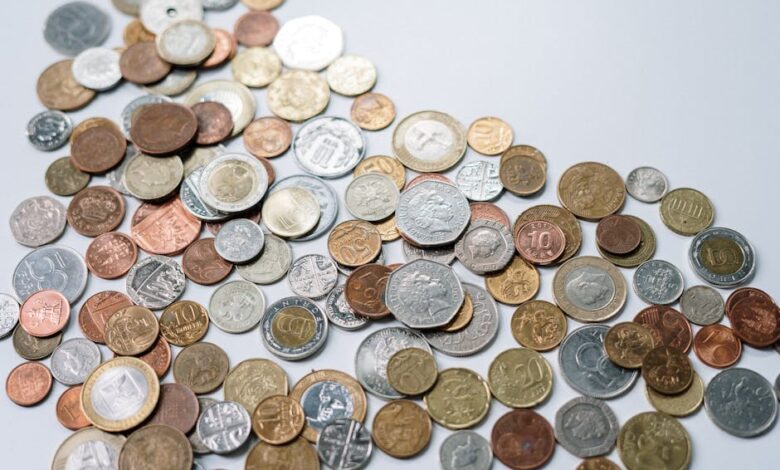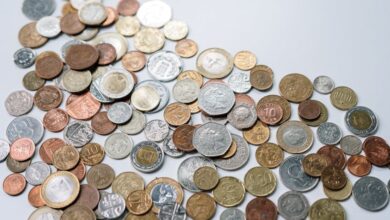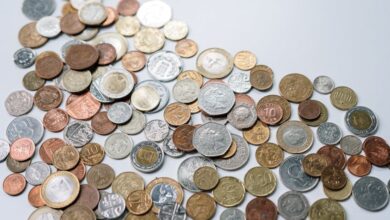Metals in Motion: Exploring Economic Trends, Sustainability, and Investment Opportunities

In an increasingly interconnected global economy, the dynamics of metal markets play a crucial role in both industrial applications and investment strategies. As we navigate the complexities of these markets, various metals emerge as key indicators of economic health and sustainability. Silver, with its dual role as a vital industrial component and a cherished investment asset, exemplifies this trend. Meanwhile, copper prices serve as a barometer for global financial stability, reflecting broader economic conditions. The rise of green energy technologies further complicates the landscape, driving unprecedented demand for rare earth metals essential to renewable energy solutions.
In this article, we will explore the multifaceted world of metals, delving into the nuances of platinum versus palladium investments, the importance of diversification in investment portfolios, and the impact of inflation on both precious and industrial metal prices. Additionally, we will assess the future of aluminum within sustainable economies and examine how mining regulations shape market dynamics. Join us as we uncover the intricate relationships between these vital resources and their implications for investors and industries alike.
- 1. "Navigating the Metal Markets: Silver's Dual Role in Industry and Investment"
- 2. "Economic Indicators: How Copper Prices Mirror Global Financial Health"
- 3. "The Shift to Sustainability: Green Energy's Influence on Rare Earth Metal Demand"
1. "Navigating the Metal Markets: Silver's Dual Role in Industry and Investment"
Silver plays a unique and multifaceted role in both industrial applications and investment strategies, making it a vital component of the global metal markets. On the industrial side, silver is prized for its exceptional conductivity, thermal properties, and antibacterial qualities. It is widely used in electronics, solar panels, batteries, and various medical applications. As the demand for green technologies continues to rise, particularly in solar energy production, the industrial need for silver is expected to grow. This trend highlights silver's importance in supporting the transition to a more sustainable economy.
In contrast, silver also serves as a significant investment asset, often viewed as a safe haven during times of economic uncertainty. Investors turn to silver as a hedge against inflation and currency fluctuations, similar to gold. The dual demand for silver—both as an industrial metal and an investment vehicle—creates a complex market dynamic. Price fluctuations can be influenced by industrial demand, investor sentiment, and macroeconomic factors.
The interplay between these two roles leads to a nuanced understanding of silver's market behavior. For instance, during economic downturns, industrial demand may decline, prompting a drop in prices. Conversely, if investors flock to silver as a safe haven, prices may surge despite weak industrial demand. This duality underscores the importance of monitoring both industrial trends and investment activities when analyzing silver's market trajectory.
As we look to the future, the ongoing advancements in technology and the growing focus on sustainable solutions will likely continue to shape silver's role in both sectors. Investors and industry stakeholders must remain vigilant, adapting their strategies to navigate the evolving landscape of the metal markets while keeping an eye on silver's unique position within them.
2. "Economic Indicators: How Copper Prices Mirror Global Financial Health"
Copper prices are often seen as a barometer for global economic health due to the metal's widespread use in various industries, particularly construction and manufacturing. As a key component in electrical wiring, plumbing, and infrastructure development, copper demand tends to rise in tandem with economic growth. When economies expand, investment in infrastructure and construction projects typically increases, leading to higher copper consumption. Consequently, a surge in copper prices may indicate robust economic activity and investor confidence.
Conversely, declining copper prices can signal economic slowdowns or decreased industrial activity. For instance, during periods of recession or uncertainty, construction projects may be scaled back, leading to reduced demand for copper. This inverse relationship is closely monitored by economists and investors alike, as fluctuations in copper prices can provide insights into trends in global manufacturing and consumption.
Moreover, copper is often referred to as “Dr. Copper” due to its ability to diagnose economic conditions; its price movements can reflect changes in industrial output, consumer demand, and geopolitical events. For example, disruptions in major copper-producing countries can lead to supply shortages, impacting prices and, by extension, the broader economic outlook.
Overall, tracking copper prices serves as a vital tool for assessing the health of the global economy, providing valuable information for investors, policymakers, and businesses alike.
3. "The Shift to Sustainability: Green Energy's Influence on Rare Earth Metal Demand"
The transition to sustainable energy sources has profoundly influenced the demand for rare earth metals, which are essential components in various green technologies. As nations strive to reduce carbon emissions and invest in renewable energy, the need for efficient energy storage, electric vehicles (EVs), and advanced electronics has surged, driving up the consumption of rare earth elements (REEs).
Rare earth metals, such as neodymium and dysprosium, are critical for manufacturing high-performance magnets used in wind turbines and electric motors. As the global market pivots towards wind energy and electric transportation, the demand for these metals is projected to increase significantly. For instance, electric vehicles, which are anticipated to dominate the automotive market in the coming decades, rely heavily on rare earth elements for their motors and batteries, further amplifying their importance.
Moreover, the rise of energy-efficient technologies and the push for electrification across various sectors have heightened the focus on recycling and sustainable sourcing of rare earth metals. This shift not only seeks to meet the growing demand but also addresses the environmental concerns associated with traditional mining practices. As a result, companies are increasingly investing in technologies that enhance the recovery of rare earth metals from electronic waste and other byproducts, promoting a circular economy.
Additionally, geopolitical factors play a crucial role in the rare earth metals market. A significant portion of the world's REEs is concentrated in a few countries, leading to supply chain vulnerabilities. As countries prioritize energy independence and sustainability, there is a concerted effort to develop domestic sources of rare earth metals, thereby influencing global supply dynamics and prices.
In summary, the shift towards sustainability and green energy technologies is reshaping the demand landscape for rare earth metals. This transformation not only underscores their critical role in the energy transition but also highlights the importance of innovation in sourcing and recycling to meet future needs responsibly.
In conclusion, the dynamics of metal markets are intricately linked to both industrial demands and investment strategies, shaping the broader economic landscape. Silver's dual role exemplifies how metals can serve as both a commodity and a store of value, while copper prices act as a barometer of global economic health, reflecting trends that affect both investors and industries alike. The increasing focus on sustainability has significantly heightened the demand for rare earth metals, driven by the rise of green energy technologies, which underscores the importance of these materials in the transition to a more sustainable future.
Moreover, the comparative analysis of platinum and palladium reveals the complexities of investment choices within the precious metals sector, highlighting the importance of diversification in investment portfolios. Inflation continues to exert pressure on the prices of both precious and industrial metals, necessitating a keen understanding of market forces for investors. Lastly, the future of aluminum stands as a testament to the evolving nature of metals in a sustainable economy, where regulatory frameworks and environmental considerations will play pivotal roles in shaping market trajectories.
As we navigate these multifaceted issues, it becomes clear that understanding the interplay between metals, economic indicators, and regulatory landscapes is crucial for making informed decisions in both industrial applications and investment opportunities. The metal markets are not only vital to economic stability but also serve as a reflection of the global shift towards sustainability and responsible resource management.





